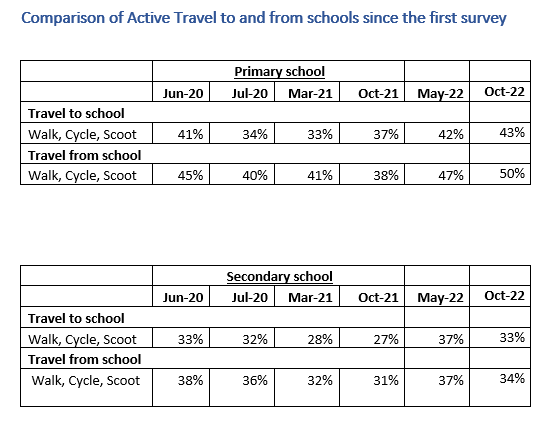Active travel by school children on the rise
The most recent school travel audit indicates increasing momentum for active travel. In primary schools, overall results showed the highest levels of active travel since the first survey in June 2020, with half of students leaving school on foot, bike or scooter. The inclusion of blended travel in the survey is new in 2022 and shows increasing numbers of parents considering blended travel and using park and stride locations, something active travel officer Alex Costen is promoting within schools.
‘Park and stride is a simple idea for families who live a bit further away, but can still enjoy the benefits of walking to school. If families drive, we’d suggest they park a 10-minute walk from school and complete their journey on foot, still giving children a chance to get active, and all the benefits that brings, plus reducing traffic, congestion and road danger around the school.
‘We are currently working with headteachers to help identify park and stride locations near to the schools and think about ways to encourage walking and cycling.’
The school travel audits are conducted each year in May and October by the Health Improvement Commission. Data are collected by teachers asking children in each class, by a show of hands, how they travelled to and from school over the course of two days. In total in October’s survey, 3981 primary pupils reported their travel to and from school and 762 secondary pupils.
Results from secondary schools were limited to la Mare de Carteret, one year group from St Sampson’s, Beaucamps, Les Voies school and Le Murier. Overall results are comparable to the same time last year, with 33% of students travelling to school by active travel means, and 34% from school. Levels of active travel show a decline into the older year groups.
‘We know it is more of a challenge to keep momentum for walking and cycling going as children enter secondary school, and when many young people pass their driving test’
‘There are some brilliant role-models out there and we’d like to work with these students to help engage and encourage other students to encourage them to walk or cycle more, even if it is just once or twice a week and to help overcome any potential barriers.’
